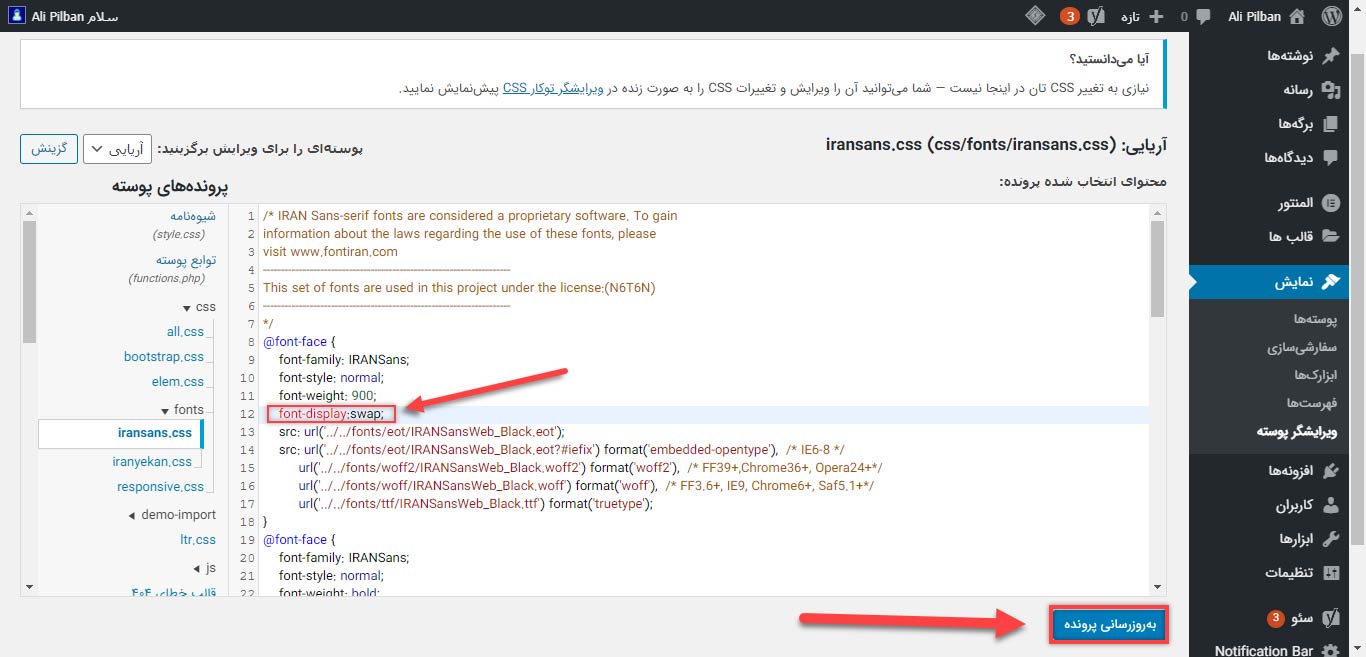

Once we set the font-display: swap value in the rule, the system's default fonts are used while the page loads until the webfonts have been loaded. Use the swap value to avoid FOIT, and to have the text appear on the screen as fast as possible, use the swap value. There are different font-display values: block, swap, fallback and optional. The font-display descriptor determines how a font is displayed based on if and when it was downloaded. Method 1: Font-display:swapįont-display is a CSS descriptor that is available to all modern browsers. Both methods have advantages and disadvantages, which I will discuss below. Tgere are two ways to make webfonts visible during loading: first is via the CSS font-display value second is by using a fallback font via a class. When the fallback font is replaced by the webfont, it is called FOUT, Flash of Unstyled Text. You can mitigate this by including a fallback font. FOIT stands for the Flash of Invisible Text and occurs when webfonts are not visible during loading. īefore we go any further, it’s helpful to distinguish the following concepts: FOIT and FOUT. This way the visitor thinks your page really does load superfast. That's why it's smart to show text anyway - not in the final font, but in a “fallback” font. Still, the latest version of the website looks a lot better to visitors. No flash of invisible text with display:swapĪs you can see, the two pages finished loading at exactly the same time. Compare the two filmstrip versions of our homepage below: The user experience can be improved by showing content on the page as fast as possible. Google thinks it’s important a web page provides the best user experience possible. So why does Lighthouse think it's such a problem? Invisible text won’t really slow down the final measured loading time of a page. Why is invisible text bad for page speed? This tells you how much time you could save by making the text visible before the webfont is loaded. Loading a webfont on your page and not taking any precautions to prevent this Flash of Invisible Text? While you analyze the PageSpeed on Lighthouse, the following message will appear: "Ensure text remains visible during webfont load". This FOIT is what causes the "Ensure text remains visible during webfont load" error message to appear. This moment is called the Flash of Invisible Text (FOIT). This makes for a poor user experience nobody wants to stare at an empty screen for too long.Īs soon as the webfont is loaded and rendered, the browser replaces the “invisible text” for the final text with the new webfont. While downloading a webfont, the text on a webpage will be temporarily hidden until the webfont has been loaded completely. So webfonts must be downloaded before they can be used. Webfonts are usually large files which are not installed on a computer by default. Of course that sounds nice, but webfonts also have their disadvantages they slow down the loading page speed in several ways. Webfonts give you the freedom to use any font on a website. Using swap for icons aren’t recommended as it would load square icons during the initial page load once implemented.Make sure that the text remains visible while loading webfontsīefore webfonts existed, web designers were stuck with just a small number of pre-installed fonts. Using font-display: swap property is only helpful when it comes to loading texts so that users could get the content loaded as fast as possible in the initial page load. Using font-display: block is recommended for icons, which seems to be the default fallback. When it comes to web fonts that load icons, I’m afraid there isn’t an acceptable fallback for such cases. The above seems to be part of the Font Awesome icons. wp-content/plugins/elementor/assets/lib/font-awesome/webfonts/fa-solid-900.woff2 When I check the Google Page Speed, I could notice at the moment only one font is being listed, and that’s part of Elementor plugin. I want them to be loaded locally with preload activated, but Im not able to do it. I reverted back the google fonts to load from the google API.


 0 kommentar(er)
0 kommentar(er)
